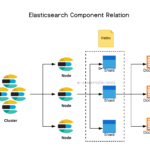When you’re diving into Site Reliability Engineering (SRE), you’ll quickly come across a few key acronyms: SLO, SLI, and SLA. These aren’t just buzzwords—they’re essential concepts that help you manage and measure how reliable and performant your services are. But what do they really mean in practice? Let’s break them down and throw in some real-world infrastructure examples to make it clear.
SLO: The Target We Aim For
SLO stands for Service Level Objective. Think of it as the goal—a specific target your service should hit to keep everyone happy. It’s like setting a benchmark that you need to meet regularly.
For instance, if you’re running a cloud-based service, like a managed database, you might set an SLO for how available that service should be. Say, you want your database to be available 99.95% of the time. This means over the course of a year, the service can only be down for about 4.38 hours in total. That’s your SLO. It’s based on the expectations of your users and the needs of your business.
SLI: The Metric That Tells Us How We’re Doing
SLI stands for Service Level Indicator, and it’s all about measurement. If the SLO is the goal, the SLI is the metric that tells you whether you’re hitting that goal or not.
Continuing with the cloud infrastructure example, let’s say you have a load balancer distributing traffic across your services. The SLI might be the percentage of requests that are successfully handled within a certain response time. For instance, you might measure that 99.9% of requests are being processed within 200ms. That’s your SLI—it’s the number that shows how well your service is performing against your SLO.
SLA: The Deal We Make with Our Customers
SLA stands for Service Level Agreement, and this is where things get official. An SLA is a formal agreement between you (the service provider) and your customer. It spells out what level of service you’re committing to and what happens if you don’t deliver.
For example, if you’re providing a managed Kubernetes service, your SLA might state that the service will maintain 99.95% availability. If the uptime drops below that threshold, you agree to provide service credits or some other form of compensation. SLAs make sure your customers know what to expect and give them recourse if you don’t meet those expectations.
Real-World Example in SRE Infrastructure
Let’s say you’re running an e-commerce platform on a cloud infrastructure. Here’s how SLOs, SLIs, and SLAs might play out:
- SLI (Service Level Indicator): You monitor your cloud infrastructure and track the percentage of requests served successfully. For example, you might observe that 99.8% of HTTP requests are successfully handled within 300ms. This metric tells you how well your infrastructure is performing in real-time.
- SLO (Service Level Objective): Based on your business needs, you set an SLO that 99.9% of requests should be served in under 300ms. This is the target you want to hit to ensure your customers have a good experience.
- SLA (Service Level Agreement): You create an SLA with your customers stating that your service will maintain 99.9% uptime. If it falls below that, perhaps you offer them a 5% discount on their next invoice. This agreement holds you accountable and ensures your customers are compensated if you don’t meet your promises.
Putting It All Together: A Simple Example
Let’s put these concepts into action with a straightforward example. Imagine you’re running a global content delivery network (CDN). Your customers expect fast and reliable content delivery.
- SLI (Service Level Indicator): You track your CDN’s uptime and the response times of content delivery. Let’s say, over a month, your CDN is up 99.95% of the time and delivers content within 100ms 99.9% of the time. That’s your SLI.
- SLO (Service Level Objective): You set a target that your CDN should be available 99.95% of the time and deliver content within 100ms 99.9% of the time. This ensures that your service is meeting the expectations of your users.
- SLA (Service Level Agreement): You make a formal agreement with your customers that if your CDN’s availability drops below 99.95% or response times exceed 100ms more than 0.1% of the time, you’ll provide service credits or other compensation. This agreement gives your customers confidence in your service.
Wrapping It Up
SLO, SLI, and SLA are more than just technical jargon—they’re the foundation of delivering reliable, high-performing services in SRE. By setting clear targets (SLOs), measuring your performance (SLIs), and holding yourself accountable with formal agreements (SLAs), you ensure that your users are satisfied and your services run smoothly.
Whether you’re managing a complex cloud infrastructure, running a global CDN, or providing a critical API, these concepts help you deliver the reliability that your customers expect. And when things go wrong (because they inevitably will), having these metrics in place allows you to understand the impact, make improvements, and keep everyone informed along the way.
So next time you hear someone mention SLOs, SLIs, and SLAs, you’ll know they’re not just buzzwords—they’re the key to keeping your services reliable and your customers happy.


